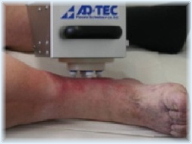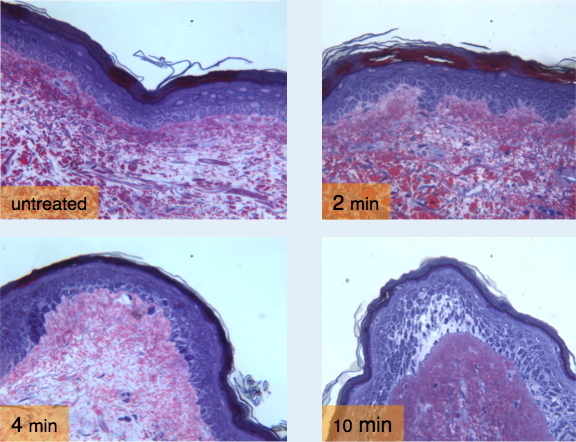| |
|
|
|
|
|
|
Plasma Medicine

 Back to Applied Research
Back to Applied Research
In plasma medicine
the aim is to transfer the knowledge gained through in vitro
(and animal) studies into medical practice.
With cold atmospheric plasmas we have the advantage that the toxic products, the
UV radiation, the heat generated, electric fields and currents can all be determined
and regulated quite accurately – and that health regulations already exist.
The current studies therefore concentrate on known properties and the appropriate
plasma design.
The current task – development of an efficient new antibacterial agent
and the associated treatment, which at the same time is harmless to human cells and
tissue – is the major immediate challenge.
Consequently, medical applications build on physics, chemistry, engineering and
biology in a major way. Many studies are required.
Medical compatibility: ex-vivo skin tests

Fig.1: After 10 minutes of treatment with the MicroPlaSter some
effect becomes visible
(probably related to drying).
AFM imaging of bacteria (E. coli) (from Pompl et al., NJP, 2009)

Fig.2: Untreated; after 3 minutes of plasma treatment; after 5 minutes
of plasma treatment.
These measurements indicate that plasma treatment is very effective for
killing bacteria, but in the right 'dose' not harmful to mammalian cells.
Read more on Plasma Medicine:
- Chronic wound treatment
- From the team in Schwabing
- From the team in Regensburg
|
|
|
|
| |
|
|

